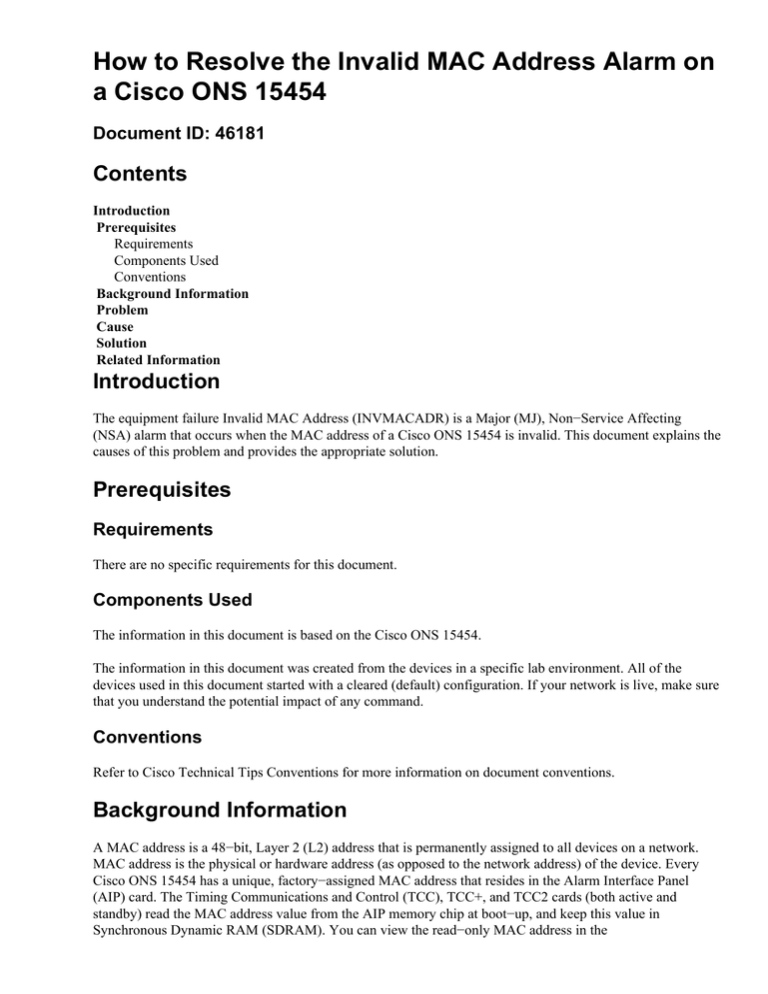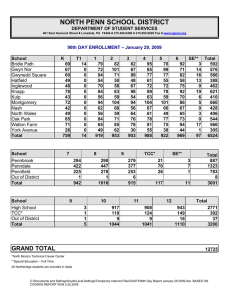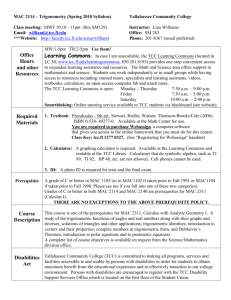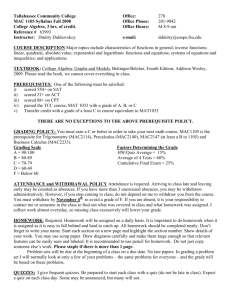
How to Resolve the Invalid MAC Address Alarm on
a Cisco ONS 15454
Document ID: 46181
Contents
Introduction
Prerequisites
Requirements
Components Used
Conventions
Background Information
Problem
Cause
Solution
Related Information
Introduction
The equipment failure Invalid MAC Address (INVMACADR) is a Major (MJ), Non−Service Affecting
(NSA) alarm that occurs when the MAC address of a Cisco ONS 15454 is invalid. This document explains the
causes of this problem and provides the appropriate solution.
Prerequisites
Requirements
There are no specific requirements for this document.
Components Used
The information in this document is based on the Cisco ONS 15454.
The information in this document was created from the devices in a specific lab environment. All of the
devices used in this document started with a cleared (default) configuration. If your network is live, make sure
that you understand the potential impact of any command.
Conventions
Refer to Cisco Technical Tips Conventions for more information on document conventions.
Background Information
A MAC address is a 48−bit, Layer 2 (L2) address that is permanently assigned to all devices on a network.
MAC address is the physical or hardware address (as opposed to the network address) of the device. Every
Cisco ONS 15454 has a unique, factory−assigned MAC address that resides in the Alarm Interface Panel
(AIP) card. The Timing Communications and Control (TCC), TCC+, and TCC2 cards (both active and
standby) read the MAC address value from the AIP memory chip at boot−up, and keep this value in
Synchronous Dynamic RAM (SDRAM). You can view the read−only MAC address in the
Provisioning/Network tab in the Cisco Transport Controller (CTC).
Problem
The Cisco ONS 15454 uses both IP and MAC addresses for circuit routing. When an Invalid MAC Address
alarm exists on a node, an incomplete circuit appears in CTC in the circuit status column. The circuit still
works and carries traffic without any problem, but the CTC cannot logically display the end−to−end
information for that circuit.
Cause
Here are the possible causes of an invalid MAC address:
• The TCC cards read the chassis MAC address value from the AIP card at boot−up. If there is a read
error, the default MAC address (00−10−cf−ff−ff−ff) is used.
• The two TCC cards in the Cisco ONS 15454 read the MAC address independently, so a read error can
cause each card to read a different value for the address.
• The AIP card holds the chassis MAC address, so component failures in the AIP card can cause a read
error.
Solution
Complete these steps in order to resolve this problem:
1. Resolve any outstanding alarms raised against the active or standby TCC+/TCC2.
2. Visually inspect the LCD display on the fan tray.
If the LCD is blank or the text is garbled, proceed to step 7.
3. At the earliest maintenance window, perform a software reset on the standby TCC+/TCC2.
Right−click the standby TCC+ when logged into CTC, and select Reset Card. You receive a prompt
to indicate whether you are sure. Choose Yes. As the card resets, a loading (Ldg) indication appears
on the card in CTC.
Note: The reset takes approximately five minutes. Do not perform any other steps until the reset is
complete.
If this card fails to boot up in Stby and continuously reloads, the AIP is probably defective. The Stby
TCC+/TCC2 attempts to read the erasable programmable read−only memory (EEPROM) on the AIP,
and continues to reload until it is successful. Proceed to step 7.
4. Sideswitch the TCC+/TCC2s. To do so, follow the procedure in the Reset Active TCC+/TCC2 Card
and Activate Standby Card section in chapter 2 of the Cisco ONS 15454 Troubleshooting Guide,
Releases 4.1.x and 4.5.
Check whether the INVMACADR alarm is still present.
When you reset the active TCC+/TCC2, the standby TCC+/TCC2 becomes active. The standby
TCC+/TCC2 keeps a copy of the chassis MAC address. If the stored MAC address is valid, the alarm
must clear.
5. Sideswitch the TCC+/TCC2s once again to make the original TCC active. To do so, follow the
procedure in the Reset Active TCC+/TCC2 Card and Activate Standby Card section in chapter 2 of
the Cisco ONS 15454 Troubleshooting Guide, Releases 4.1.x and 4.5.
Check whether the INVMACADR alarm is still present.
6. If the INVMACADR was present for both step 4 and step 5, the AIP is probably defective. Proceed to
step 7.
If the INVMACADR was present only in either step 4 or step 5, replace the TCC+/TCC2 that was
active at that time. If the card is currently in standby, you can simply remove and replace the card. If
the card is active, follow the procedure in Reset Active TCC+/TCC2 Card and Activate Standby Card
in order to make the card standby, and then simply remove and replace the card.
Note: If the replacement TCC+/TCC2 is loaded with a software version other than that of the active
TCC+/TCC2, the card can take up to 30 minutes to load. The LEDs flicker between Fail and Act/Stby
while the software is copied from the active TCC+/TCC2.
7. Open a case with the Cisco Technical Assistance Center for assistance on how to determine the
previous MAC address of the node. Replace the AIP. To do so, follow the procedure in the Replace
the Alarm Interface Panel section in chapter 3 of the Cisco ONS 15454 Troubleshooting Guide,
Releases 4.1.x and 4.5.
Related Information
• Optical Product Support Pages
• Technical Support & Documentation − Cisco Systems
Contacts & Feedback | Help | Site Map
© 2013 − 2014 Cisco Systems, Inc. All rights reserved. Terms & Conditions | Privacy Statement | Cookie Policy | Trademarks of
Cisco Systems, Inc.
Updated: Feb 03, 2005
Document ID: 46181






